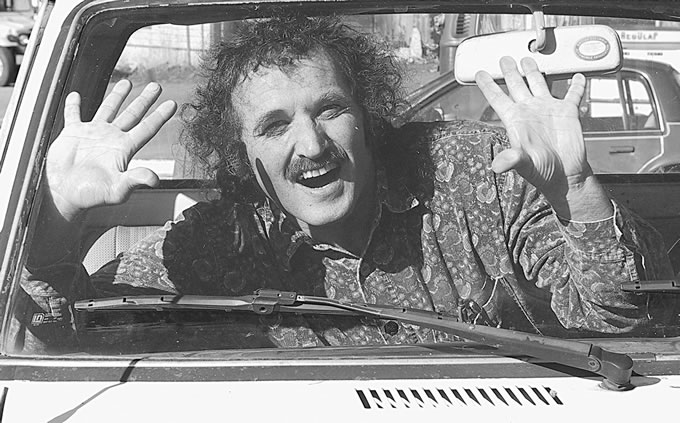AEDs: The Power to Save Lives
Shilo Zylbergold | Best Medicine

image by: Hawaii County
You don’t have to be a rocket scientist to use an Automated External Defibrillator (AED) to save a life. You just need to know where you can find one, and it will practically do the rest itself
Do you know where to find your nearest AED? No, I’m not referring to a birth control device or a seemingly ubiquitous texting and chat acronym like LOL or OMG. What we’re talking about here is the Automated External Defibrillator.
This little baby, about the size of a school kid’s lunch box, can mean the difference between death and survival for anyone experiencing sudden cardiac arrest (SCA).
By the way, people including the media still think that heart attack and cardiac arrest are the same thing, but they are really quite different from each other. Put simply, you are awake with a heart attack whereas with SCA you are unconscious and essentially dead!
As can be expected, time is of the essence when it comes to dealing with cardiac arrest. Statistics have shown that for every minute that a victim is in a state of SCA, the chance of survival is reduced by ten per cent and if an AED is used in the first five minutes after the heart stops beating the survival rate can double.
So when should you use an AED?
First of all you have to recognize sudden cardiac arrest. If the victim has stopped breathing or is gasping for air, and there is no pulse or movement, then it is very probable that you are looking at a SCA in action.
Okay, what do you do now? Call 911 and immediately begin cardiopulmonary resuscitation (CPR) until medical help arrives. If an AED unit is available, use it.
Believe it or not, although some basic instruction in operating an AED couldn’t hurt, even someone who is untrained can still use an AED to save a life. Once the sticky pad electrode sensors are attached to the victim’s chest, the device itself is able to assess whether the victim is in cardiac arrest.
If the AED detects a ventricular fibrillation rhythm (a somewhat “sputtering” of the ventricle chambers of the heart without any blood really being pumped out to the body), the information is relayed to the computer in the AED and it will then determine that a shock is needed. It will not send an electric charge to the heart unless this rhythm has been determined.
If the computer senses that the heart has stopped, and that an electric charge is in order, it will then emit step-by-step voice prompts to ensure that anybody (even techno idiots like me) will be able to properly administer an electroshock to get the heart beating again.
One can only hope that the pre-recorded voice instructions built into the AED are easier to follow than the so-called “dummy proof” directions that accompany any piece of Ikea furniture needing assembly. The last thing you want to hear as you’re trying to revive someone in mortal danger is “pass electrode A through grommet B and attach to wire C and then fasten securely to nipple D”. You also want to be able to understand the voice, so it better not be like some of those long distance sales pitches I keep getting.
And here’s another thought: you’d think that the last thing on your mind at a moment like this would be whether anybody would be likely to sue you if you somehow managed to do something wrong. We do, however, live in a litigious society where you can just never be sure if someone may be out to make a buck by abusing the legal system. Fortunately, the Good Samaritan laws and statutes in the U.S. and the recent federal Cardiac Arrest Survival Act in Canada protect ordinary citizens who are just trying to do their best in a medical emergency.
Where are you supposed to find an AED if you need to use it in an emergency? Fortunately, on the small island I call home somewhere in the southwest corner of Canada, you can find one in more than 30 strategic locations. These spots are marked with special AED signs portraying a red heart with a yellow lightning bolt flashing through it. You should be able to come across one at the local indoor pool, the golf club, the high school, and on your way to the washrooms at the public library. All three fire halls have them, as do both the uptown and downtown pharmacies. Even six of the local hydro-electric utility trucks are equipped with AEDs.
More incredibly, a local company by the name of Industry Drones has taken the AED concept to the cutting edge. Working within its “Drones for Good” project, it has tested and now is confident it can swiftly deliver an AED to the site of a cardiac arrest emergency via an unmanned aerial drone. How this works is that an emergency call from a smart phone will be relayed via an app to a source which will then notify first aiders in the vicinity, and gather GPS coordinates from the smart phone signal. A drone carrying an AED will be immediately dispatched to the precise area and, upon landing, make available the life-saving apparatus.
Of course, seeing that delivery of AEDs by drone only makes sense if the device can be rushed to the emergency scene within five minutes of the medical crisis, it is probably more essential to ensure that every community has an adequate supply of them of them spread out in decentralized locations.
Nobody asked me, but I believe we live in a better place thanks to the efforts that have brought us the AED. Lord knows I’m no techno geek and if you were to ever witness me driving around in my duct tape-enhanced pickup truck, you’d know that’s true. Still, I would have to be an ignorant fool to not be grateful for this life-saving device.
Maybe AEDs will soon be installed in every single new vehicle…which kind of counts me out, but hey, if those drones guarantee delivery within five minutes, this old heart feels a whole lot safer.
Shilo Zylbergold lives on a small island somewhere in the southwest corner of British Columbia, Canada. He grows vegetables, teaches math, and is a columnist for a local paper. Send complaints to [email protected]

.

Introducing Stitches!
Your Path to Meaningful Connections in the World of Health and Medicine
Connect, Collaborate, and Engage!
Coming Soon - Stitches, the innovative chat app from the creators of HWN. Join meaningful conversations on health and medical topics. Share text, images, and videos seamlessly. Connect directly within HWN's topic pages and articles.









.jpg)






